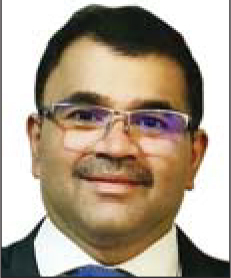
In the past two decades, India’s economy has been propelled by the power sector. More than 130 million people have joined the power grid since 2013, indicating a massive expansion in access to electricity. The installed power generation capacity has increased by over five times from 63.63 GW in 1990 to 363.37 GW today. Meanwhile, renewable energy generation capacity has reached 83 GW. Despite making remarkable progress, India is still quite far from meeting its rising electricity demand. Power cuts continue to be an obstacle to industrial and business progress. While electrification has powered India’s socio-economic development, the sector is now facing challenges due to the ageing infrastructure and the increasing share of renewables in the overall energy mix. An uninterrupted supply of power requires large-scale investments to ensure sustainable power generation and augment the energy delivery mechanisms.
There is an urgent need to modernise India’s transmission grid given the shift in focus from fossil fuels to renewable sources of power generation. India, the fourth-largest carbon emitter in the world, has committed to reducing emissions by 33-35 per cent by 2030 compared to 2005 levels. This would require the country to source 40 per cent of its total energy requirement from non-fossil fuel sources. The tightening of grid performance parameters is required, especially in the context of increasing renewable energy integration. Grid modernisation is a key prerequisite for achieving India’s renewable energy investment ambitions. It is also the right time to review the long-term ownership structure, operations and governance of discoms.
The transmission and distribution (T&D) segment is beset with challenges such as loss-making discoms, mounting T&D losses, frequent power outages and the use of obsolete wiring and equipment, to name a few. Their financial stress has dented their purchasing ability and rendered them incapable of enhancing the distribution infrastructure.
High technical losses point to systemic flaws in the network, which can be caused by multiple stages of transmission, overloading of equipment including transformers and conductors, use of obsolete wiring and related elements. To reduce these losses, the adoption of new-age technology is the way forward. These technologies can positively alter India’s T&D landscape, both in terms of reducing losses and improving reliability.
With the advancement and availability of technologies, the sector is witnessing rapid adoption of modern tools and techniques, which are helping to reduce costs and enhance operational efficiencies. For instance, helicopters, cranes and drones are being used to erect huge transmission towers in difficult hilly terrain. Drones, in particular, are being used for inspection and aerial surveillance of power lines and transmission towers.
Surveillance through drones is more efficient than manual surveys. It helps in faster detection of faults. It also cuts maintenance costs and losses from outages. These drones are equipped with ultra-HD cameras that can take high resolution close-up photographs and videos of towers and their components.
Similarly, affixing sensors to equipment can enable remote and periodic measurement of parameters such as vibration, temperature and wear. This can help devise an optimum preventive maintenance schedule to ensure peak efficiency throughout the equipment life cycle. Pipelines with internet-connected sensors can send in information about potential leaks, which could, in turn, help prevent the potential wastage of resources. Smart meters can provide accurate real-time consumption data and stop losses due to the underestimation of consumption. Smart grids can gather more dynamic information about network health. Artificial intelligence can prove to be a boon for the sector, enabling energy companies to deploy concepts such as predictive analytics, machine learning and big data to achieve economies of scale and improved efficiencies.
It is a policy imperative to transform T&D networks while focusing on sustainable power generation. The power transmission segment needs a healthy injection of strategic interventions and reforms for it to be sustainably upgraded and enabled as a key contributor to the socio-economic growth of the country.
